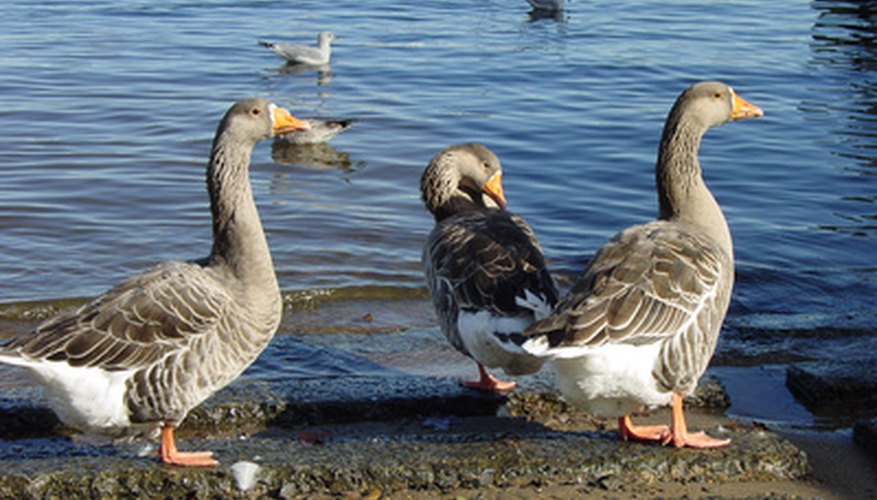The Chinese goose (Anser cygnoides) is also called the swan goose. Though their wild relatives still roam free in Mongolia, China and Russia, the Chinese goose is best known in North America as a popular backyard pet. Telling a gander (male) from a female goose can often be accomplished with a few simple observations and comparisons.
- The Chinese goose (Anser cygnoides) is also called the swan goose.
- Telling a gander (male) from a female goose can often be accomplished with a few simple observations and comparisons.
Measure the wing, bill and neck of the goose. Male Chinese geese are typically larger with a proportionally longer bill and neck. According to AvianWeb.com, the male's wing typically measures 45 to 46cm but is only 37.5 to 44cm in females. The male's bill is approximately 87 to 98mm long, while the female's is 75 to 85mm. The tarsus (leg below the thigh) of a male is around 81mm.
Observe the round knob above the bill. A male's knob will be about twice as large as a female's.
Listen to the goose's vocalisation. According to CornerStone Farm in Virginia, breeders of Chinese geese for sale to backyard poulty-keepers, the male has a high and shrill honk that sounds like a long double syllable, resembling the sound "steee-ill." The female has a deeper honk, which is shorter and sounds like "hoink."
- Observe the round knob above the bill.
- According to CornerStone Farm in Virginia, breeders of Chinese geese for sale to backyard poulty-keepers, the male has a high and shrill honk that sounds like a long double syllable, resembling the sound "steee-ill."
Look for eggs. Only a female Chinese goose can lay eggs. A Chinese goose will lay an average of 40 to 60 eggs per season, twice yearly: once in spring and once in autumn. The female sits on the eggs for 28 to 34 days.
TIP
Geese mate for life, and males may be very protective of females.
WARNING
Telling the gender of juveniles requires "vent sexing," or restraining the gosling and inverting its cloaca (vent) to show the sex organs. This can injure the bird and should only be attempted by experts.
